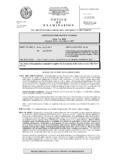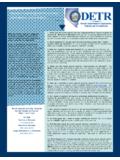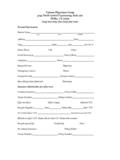Transcription of Benefits Fringe Tax Guide to Page 1 of 33 10:50 - 22-Feb ...
1 Userid: CPMS chema: tipxLeadpct: 100%Pt. size: 10 Draft Ok to PrintAH XSL/XMLF ileid: .. tions/P15B/2017/A/XML/Cycle03/source(Ini t. & Date) _____Page 1 of 32 13:41 - 16-Dec-2016 The type and rule above prints on all proofs including departmental reproduction proofs. MUST be removed before of the TreasuryInternal Revenue ServicePublication 15-BCat. No. 29744 NEmployer's Tax Guide to FringeBenefitsFor use in 2017 Get forms and other information faster and easier at: (English) (Espa ol) ( ) ( ) (Pусский) (Ti ngVi t) ContentsWhat's Fringe Benefit Fringe Benefit Exclusion and Health Minimis (Minimal) Care Stock Cell Life Insurance Savings on Your Business Expense Planning (Commuting) Condition Fringe Benefit Valuation Valuation Value Conditions Commuting Rules for Withholding, Depositing, and To Get Tax DevelopmentsFor the latest information about developments related to Pub.
2 15-B, such as legislation enacted after it was published, go to 's NewCents-per-mile rule. The business mileage rate for 2017 is cents per mile. You may use this rate to reimburse an employee for business use of a personal vehicle, and under certain conditions, you may use the rate under the Dec 16, 2016 Page 2 of 32 Fileid: .. tions/P15B/2017/A/XML/Cycle03/source13:4 1 - 16-Dec-2016 The type and rule above prints on all proofs including departmental reproduction proofs. MUST be removed before rule to value the personal use of a vehicle you provide to an employee. See Cents-Per-Mile Rule in section parking exclusion and commuter transpor-tation benefit. For 2017, the monthly exclusion for quali-fied parking is $255 and the monthly exclusion for com-muter highway vehicle transportation and transit passes is $255. See Qualified Transportation Benefits in section limit on a health flexible spending ar-rangement (FSA).
3 For plan years beginning after De-cember 31, 2016, a cafeteria plan may not allow an em-ployee to request salary reduction contributions for a health FSA in excess of $2,600. For more information, see Cafeteria Plans in section permitted election changes for health cov-erage under a cafeteria plan. Notice 2014-55, 2014-41 672, available at , expands the application of the permitted change rules for health coverage under a cafeteria plan and discusses two specific situations in which a cafeteria plan participant is permitted to revoke his or her election under a cafeteria plan during a period of marriage. A marriage of two individuals is recognized for federal tax purposes if the marriage is rec-ognized by the state, possession, or territory of the United States in which the marriage is entered into, regardless of legal residence. Two individuals who enter into a relation-ship that is denominated as a marriage under the laws of a foreign jurisdiction are recognized as married for federal tax purposes if the relationship would be recognized as marriage under the laws of at least one state, possession, or territory of the United States, regardless of legal resi-dence.
4 Individuals who have entered into a registered do-mestic partnership, civil union, or other similar relationship that isn't denominated as a marriage under the law of the state, possession, or territory of the United States where such relationship was entered into aren't considered mar-ried for federal tax purposes, regardless of legal 2013-61 provides special administrative proce-dures for employers to make claims for refund or adjust-ments of overpayments of social security and Medicare taxes with respect to certain same-sex spouse Benefits before expiration of the period of limitations. Notice 2013-61, 2013-44 432, is available at You may correct errors to federal income tax withholding and Additional Medicare Tax with-held for prior years if the amount reported on your employ-ment tax return doesn't agree with the amount you ac-tually withheld. This type of error is an administrative error.
5 You may also correct errors to federal income tax with-holding and Additional Medicare Tax withheld for prior years if section 3509 rates 2014-1 discusses how certain rules for cafeteria plans, including health and dependent care FSAs, and health savings accounts (HSAs) apply to same-sex spouses participating in employee benefit plans. Notice 2014-1, 2014-2 270, is available at forms and publications. Visit to download forms and publications. Otherwise, you can go to to order current- and prior-year forms and instructions. Your order should arrive within 10 business questions. If you have a tax question not answered by this publication, check and How To Get Tax Help at the end of this of missing children. The IRS is a proud partner with the National Center for Missing & Exploited Children (NCMEC). Photographs of missing children se-lected by the Center may appear in this publication on pa-ges that would otherwise be blank.
6 You can help bring these children home by looking at the photographs and calling 1-800-THE-LOST (1-800-843-5678) if you recog-nize a publication supplements Pub. 15, Employer's Tax Guide , and Pub. 15-A, Employer's Supplemental Tax Guide . It contains information for employers on the em-ployment tax treatment of Fringe and suggestions. We welcome your com-ments about this publication and your suggestions for fu-ture can send us comments from you can write to:Internal Revenue ServiceTax Forms and Publications1111 Constitution Ave. NW, IR-6526 Washington, DC 20224We respond to many letters by telephone. Therefore, it would be helpful if you would include your daytime phone number, including the area code, in your we can't respond individually to each com-ment received, we do appreciate your feedback and will consider your comments as we revise our tax forms, in-structions, and publications.
7 We can't answer tax ques-tions sent to the above Fringe Benefit OverviewA Fringe benefit is a form of pay for the performance of services. For example, you provide an employee with a Fringe benefit when you allow the employee to use a busi-ness vehicle to commute to and from of services. A person who performs serv-ices for you doesn't have to be your employee. A person may perform services for you as an independent Page 2 Publication 15-B (2017)Page 3 of 32 Fileid: .. tions/P15B/2017/A/XML/Cycle03/source13:4 1 - 16-Dec-2016 The type and rule above prints on all proofs including departmental reproduction proofs. MUST be removed before , partner, or director. Also, for Fringe benefit pur-poses, treat a person who agrees not to perform services (such as under a covenant not to compete) as performing of benefit. You re the provider of a Fringe bene-fit if it is provided for services performed for you.
8 You re considered the provider of a Fringe benefit even if a third party, such as your client or customer, provides the bene-fit to your employee for services the employee performs for you. For example, if, in exchange for goods or serv-ices, your customer provides day care services as a Fringe benefit to your employees for services they provide for you as their employer, then you re the provider of this Fringe benefit even though the customer is actually provid-ing the day of benefit. The person who performs services for you is considered the recipient of a Fringe benefit provi-ded for those services. That person may be considered the recipient even if the benefit is provided to someone who didn't perform services for you. For example, your employee may be the recipient of a Fringe benefit you pro-vide to a member of the employee's Fringe Benefits Taxable?Any Fringe benefit you provide is taxable and must be in-cluded in the recipient's pay unless the law specifically ex-cludes it.
9 Section 2 discusses the exclusions that apply to certain Fringe Benefits . Any benefit not excluded under the rules discussed in section 2 is taxable Benefits in pay. You must include in a recipient's pay the amount by which the value of a Fringe benefit is more than the sum of the following amount the law excludes from amount the recipient paid for the rules used to determine the value of a Fringe benefit are discussed in section the recipient of a taxable Fringe benefit is your em-ployee, the benefit is subject to employment taxes and must be reported on Form W-2, Wage and Tax Statement. However, you can use special rules to withhold, deposit, and report the employment taxes. These rules are dis-cussed in section the recipient of a taxable Fringe benefit isn't your em-ployee, the benefit isn't subject to employment taxes. However, you may have to report the benefit on one of the following information the recipientreceives the benefit as:Use:An independent contractorForm 1099-MISC, Miscellaneous IncomeA partnerSchedule K-1 (Form 1065), Partner's Share of Income, Deductions, Credits, more information, see the instructions for the forms lis-ted PlansA cafeteria plan, including an FSA, provides participants an opportunity to receive qualified Benefits on a pre-tax basis.
10 It is a written plan that allows your employees to choose between receiving cash or taxable Benefits , in-stead of certain qualified Benefits for which the law pro-vides an exclusion from wages. If an employee chooses to receive a qualified benefit under the plan, the fact that the employee could have received cash or a taxable ben-efit instead won't make the qualified benefit , a cafeteria plan doesn't include any plan that offers a benefit that defers pay. However, a cafeteria plan can include a qualified 401(k) plan as a benefit. Also, cer-tain life insurance plans maintained by educational institu-tions can be offered as a benefit even though they defer Benefits . A cafeteria plan can include the fol-lowing Benefits discussed in section and health Benefits (but not Archer medical savings accounts (Archer MSAs) or long-term care in-surance).Adoption care life insurance coverage (including costs that can't be excluded from wages).

















